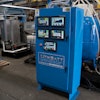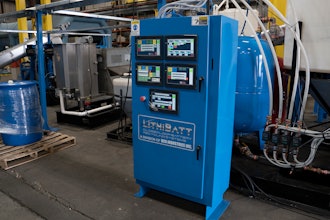It’s mostly been grey clouds and miserable forecasts in the oil industry for the past few years. But a number of companies have managed to thrive in the new reality of stagnating oil prices — all while other energy companies have gone bankrupt and tens of thousands have lost their jobs. What gives?
In the new reality of $50-a-barrel oil, companies continue to find innovative ways to make the process of drilling for tight oil more efficient and lucrative. In fact, Fred Choumert, a principal with Roland Berger, a strategy consulting firm, calls the industry “young” and says a number of incremental breakthroughs are still likely to come.
A recent report by Roland Berger, “Lower For Much Longer,” has shed light on this trend in the industry while pointing to Adam Smith’s “invisible hand” theory to sum it up. Basically, the downturn has unleashed the invisible forces of competition, which has driven innovation.
What Does This Have To Do With Pumpkins?
Although it doesn’t seem like the most likely link, the situation looks a lot like what happened to pumpkin growers in the 1990s.
Back then, a pumpkin that was considered “big” weighed about 500 pounds. Then, the Internet came along and growers began sharing information about which seeds worked best under which conditions, etc. By 2014, growers were managing to produce pumpkins well over 2,300 pounds.
In the oil world, changes have been happening rapidly as well, and according to Choumert, have been led by companies like EOG Resources and Pioneer Natural Resources.
Roland Berger’s report points out that: “In 2012, less than 40 percent of the U.S. horizontal rigs were of the most automated and efficient AC Drive variety. By 2016 that number had accelerated to 70 percent.”
Choumert says that the industry has shifted toward a much simpler way of fracking. Now drillers use bigger pumps at the surface and more water and sand.
“For every foot of well that was drilled [using the older drills], you used to put 200 pounds of sand down the well. Today, some of the well use as much as 5,000 pounds,” Choumert says.
The switch to more sand and water is cheaper and has reduced oil companies’ reliance on chemicals. And although it uses more water, Choumert says, “...companies are much better at capturing the water that flows back, treating it and reusing it. The entire industry is picking up on this technique.”
Why The Industry Is Still ‘Young’
Choumert says there’s still a lot of room to grow, and there’s still plenty of ways the industry could innovate.
“Everything could be improved upon,” Choumert says. “Digitalization and automation could improve labor and capital efficiency, and a better integration of activities could enable seamless and quick transitions of one oilfield step to another."
Not only that, Apache Corp.’s recent discovery of a gas field in Texas that contains an estimated 3 billion barrels of oil and 75 trillion cubic feet of natural gas shows that companies can still hit pay dirt.
“[Apache] persevered where other companies didn’t think it was possible,” Choumert says. “They came back with a fresh set of eyes, took a hard look and thought it was promising.”
The Road Ahead
Could oil prices dramatically drop or rise from the $50 zone anytime soon? Although there could be short-term changes, it would take a major and unlikely shock to the current situation for prices to change for long, Choumert says.
OPEC’s actions are always a factor, although its power to control prices has waned considerably. Even so, news this week that it isn’t scaling back production, prices stumbled down to about $43.
A worsening glut could pressure prices downward and demand side shocks — like a recession in China — could hurt prices even more. But Choumert says in this new environment of enhanced drilling techniques, companies can typically still survive at $40 a barrel.
Barring any dramatic changes, Choumert says the industry seems to have accepted the $50-a-barrel world and settled into a new normal that is likely to last for the next few years.
“Lower for much longer is here and it is time the industry accepts it,” the Roland Berger report says.






















